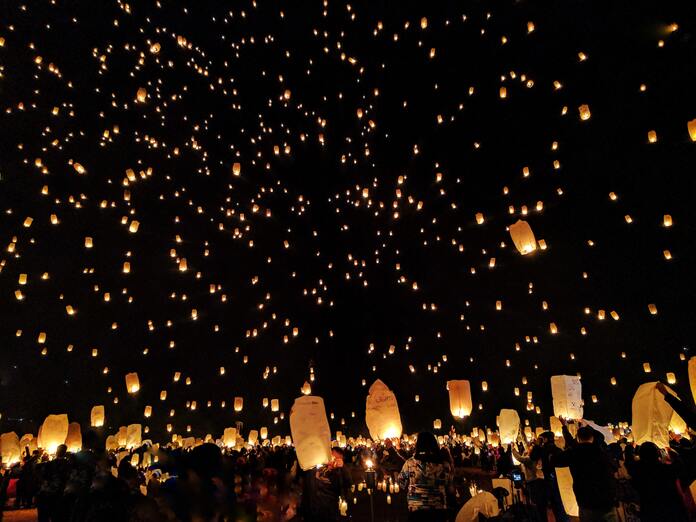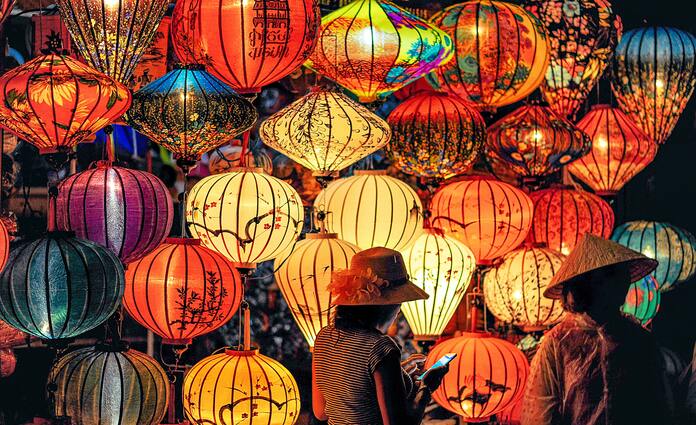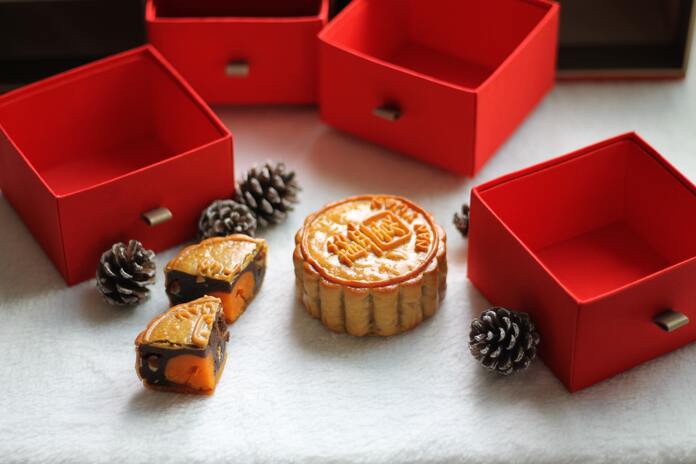The Mid-Autumn Festival, also known as the Moon Festival or Mooncake Festival, is a traditional Chinese event. Similar holidays are observed in Japan (Tsukimi), Korea (Chuseok), Vietnam (Tet Trung Thu), and other East and Southeast Asian countries.
It is a prominent holiday observed throughout most of Asia, falling on the 15th day of the lunar calendar’s eighth month when there is a full moon at night. As a result, it is frequently referred to as the “Moon Festival.” This year’s Mid-Autumn Festival is on September 29.

China
The full moon represents a family reunion in Chinese traditions, hence Mid-Autumn is a festival to be celebrated at home. People admire the moon and enjoy moon cakes, which can be filled with anything from salted egg yolk and lotus paste to ice cream, fruit, and custard.
Lanterns are a vital element of the celebrations. Candle-lit paper lanterns are rarely seen these days. The majority of children carry around battery-powered versions. Single-use glow sticks are also popular, prompting environmentalists to call for restrictions on their use.
Read more: 6 Types of Mooncakes you should try this Mid-Autumn Festival
South Korea
At this time of year, South Koreans celebrate Chuseok, also known as Hangawi. Along with Seollal, or the lunar new year, it is one of the country’s most prominent holidays. In South Korea, the day before and after are also public holidays, giving people time to travel home. Chuseok will be observed this year from September 28 to 30.
Koreans consume songpyeon, a half-moon-shaped rice cake filled with a semi-sweet stuffing, as well as seasonal fruits and vegetables like persimmons and chestnuts, at celebratory celebrations. They also enjoy a variety of entertainment, such as the traditional circle dance called ganggangsullae. And, of course, at night, people go out to enjoy the full moon, looking for the moon bunny, or daltokki. The creature is claimed to be creating rice cakes on the lunar surface.

Japan
Tsukimi is a Japanese holiday that means “looking at the moon.” They, like the Koreans, try to identify the moon rabbit, known in Japanese as tsuki no usagi, as it goes about its joyful duty of manufacturing the rice cakes known as mochi.
Tsukimi is traditionally celebrated by decorating the home with pampas grass to symbolize a plentiful harvest. Tsukimi-dango, a spherical rice dumpling signifying health and happiness, and seasonal vegetables such as chestnuts and pumpkin are popular festive delicacies. Eggs are also ingested because their round whiteness is thought to represent the full moon.
Vietnam
Tet Trung Thu is the Vietnamese name for the Mid-Autumn Festival. Families celebrate Tet Trung Thu by arranging cakes and fruit trays, which represent filial piety, in front of ancestral altars in their homes. Moon cakes, which come in two varieties: banh nuong (oven-baked) and banh deo (soft-crusted), are very popular in Vietnam.

Singapore
Because three-quarters of Singaporeans are of Chinese heritage, many Mid-Autumn Festival customs and traditions are also followed in Singapore.
Singaporeans now commemorate the Mid-Autumn Festival with lavish lantern displays presented throughout the city-state in locations such as Gardens by the Bay. The Chinatown events are likewise larger in scope. The area is transformed into a bustling bazaar, with pop-up vendors offering festive ornaments and snacks. There are also live performances and lantern-painting competitions.

